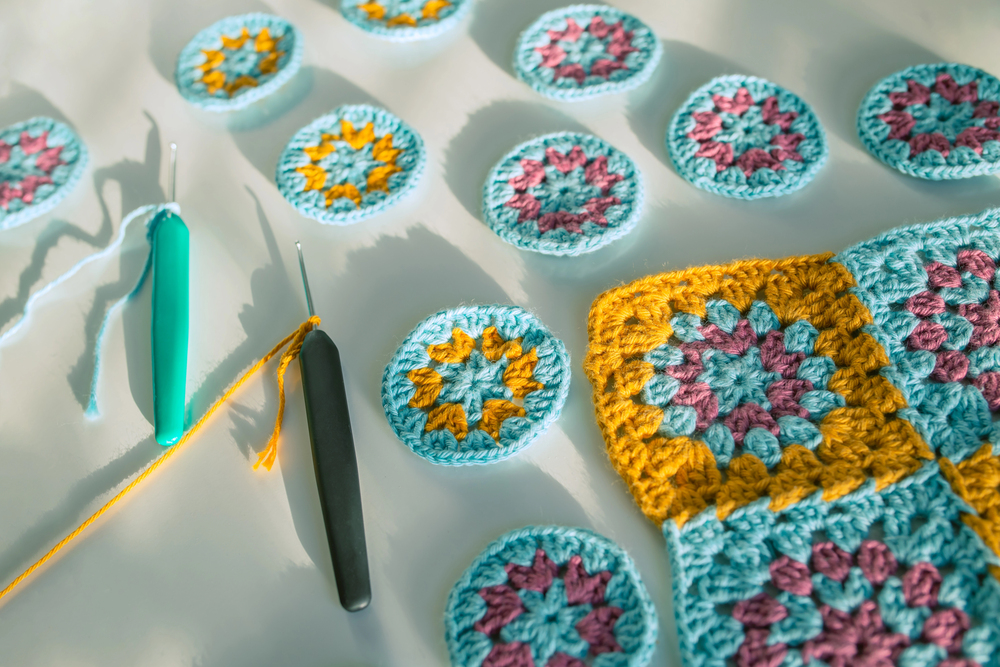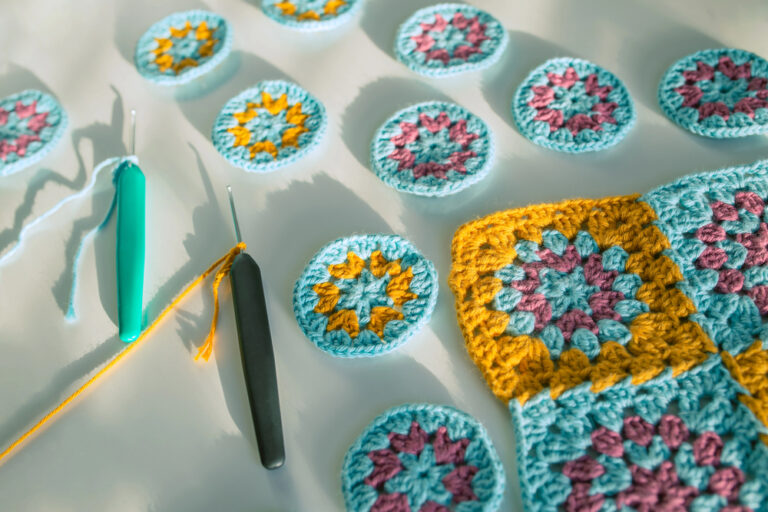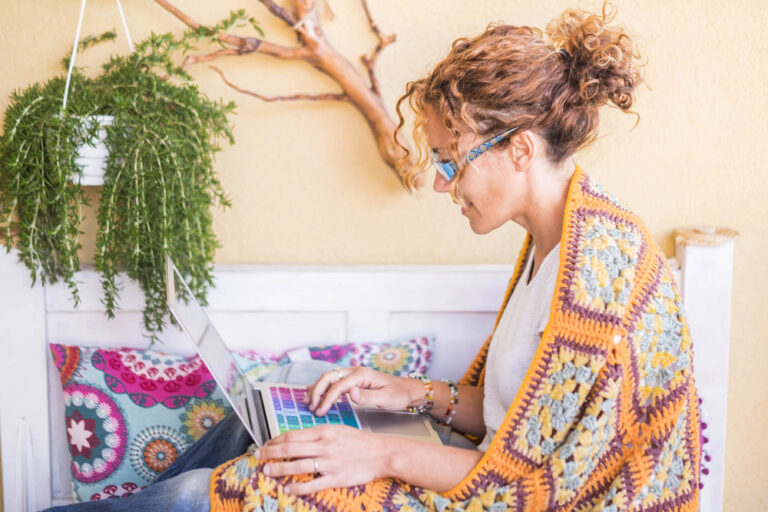
Crochet tutorials are one of the most rewarding pathways for brand-new makers and experienced crafters to turn yarn into wearable, useful, or decorative fabric. Crochet tutorials offer step-by-step lessons that bridge the gap between hesitation and hands-on mastery. With the rise of visual platforms and video-centric learning, crochet tutorials are now more precise, more accessible, and more effective than ever. Whether your goal is to stitch a single-color coaster, a complex throw blanket, a wearable cardigan, or a showpiece lace shawl, there is a crochet tutorial somewhere that already gracefully translates all of the technical steps.
Today’s crochet learners are no longer confined to printed books, guilds, and craft circles. Crochet tutorials exist in detailed written form, in video form, in community forums, and in photo-based step collections. Crochet today is democratized: the first few stitches once required a watchful instructor—now a single replayable video loop does the same job.
The following 8 powerful areas represent the core pillars of crochet tutorials that actually accelerate growth—not just passive inspiration but skill-building instruction. These are not random categories; they are the foundational building blocks that transform a crocheter from “trying it once” into “creating as a hobby for life.”
1) Crochet tutorials for foundation stitches
Foundation stitches—or “the basics”—appear in every crochet learning path. Tutorials that break down slip knots, chain stitches (ch), single crochet (sc), half-double crochet (hdc), double crochet (dc), treble crochet (tr), and slip stitch (sl st) are the most rewatched beginner tutorials online because they give all crocheters their entry into fabric building. The difference between an inconsistent first row and a tight, consistent, professional-looking one is muscle memory—and muscle memory grows when the tutorial repeats clear camera angles and consistent pace.
High-quality beginner crochet tutorials usually include:
-
slow hands
-
bright yarn on neutral backgrounds
-
voice-over that emphasizes counting
-
zoom views on yarn tension
This category is the foundation because every project—from hat brims to shawl borders—begins at the foundation stitch level.
2) Crochet tutorials for pattern reading confidence
Written patterns are full of abbreviations and parentheses. The moment a beginner sees “hdc 3, sc2tog, ch3, sk next 2 sts” they panic—until a tutorial breaks down why those abbreviations exist, how to decode them, and what they look like in motion. Pattern literacy is the difference between copying one project and having the independence to make dozens.
Great instructional segments for reading patterns include:
-
how to read in rows vs. rounds
-
how stitch repeat symbols work
-
how stitch count markers prevent mistakes
-
how to measure gauge before committing to size
Crochet tutorials that teach pattern reading give makers the independence that knitters and crocheters once gained only through apprenticeship.
3) Crochet tutorials for yarn weight + hook pairing
Nothing derails a crocheter’s confidence faster than selecting the wrong yarn weight for the wrong hook size. Tutorials in this category explain fiber behavior, gauge differences, tension challenges, and project suitability.
For example, bulky yarn with a tiny hook creates a rigid, dense brick—impossible to shape into soft wearables. Conversely, lace weight yarn with a jumbo hook becomes loose and webbed. Crochet tutorials that teach yarn weight pairings save dozens of hours of frustration and wasted yarn.
4) Crochet tutorials for shaping techniques
Flat rectangles are great. But shaping is where fabric becomes sculpture—garments, baskets, hats, bags, plushies, motifs—everything dimensional requires shaping. Crochet tutorials that break down increases, decreases, short rows, gussets, and crown shaping make the difference between a crocheter who makes flat dishcloths and a crocheter who builds three-dimensional forms.
Examples:
-
how to create shoulder slope in garments
-
shaping a head dome for a beanie
-
turning corners without tension distortion
-
shaping amigurumi spheres and cones
These tutorials remove the fear of leaving the “flat” world behind.
5) Crochet tutorials for colorwork mastery
Color changes are intimidating because they require yarn management and strand control. Tutorials here teach how to:
-
switch colors cleanly in rows and rounds
-
carry floats without tangles
-
trap strands invisibly inside stitches
-
maintain even tension across color boundaries
Color theory, stripe planning, mosaic technique, and tapestry crochet all benefit directly from visual-based colorwork tutorials.
This is one of the most popular topic categories on YouTube, because color changes look like magic, even though the steps are extremely methodical.
6) Crochet tutorials for project categories (accessories, fashion, home)
There are project-specific lessons for hats, sweaters, scarves, socks, bags, water bottle slings, coasters, shawls, baby blankets, market totes, book sleeves, floor poufs, plant hangers, and hundreds more. These project-based crochet tutorials convert technique knowledge into real, finished objects. Each project class teaches new stitches, new transitions, new finishing techniques—and builds confidence because the viewer ends up with a physical item they can use or gift.
Great project tutorials always include:
-
clear yardage estimates
-
printable pattern PDFs or easy on-screen captions
-
“pause points” where a beginner can stop without losing progress
Working category-by-category through project tutorials is one of the fastest skill development models in modern crochet.
7) Crochet tutorials that teach finishing + blocking
Finishing determines whether a piece looks “homemade” or “handcrafted.” The difference is invisible to machines, but extremely visible to humans. Tutorials in this category cover:
-
blocking with steam vs. wet method
-
pinning lace to open the eyelets
-
weaving in ends invisibly
-
adding borders to stabilize edges
Finishing is often not fun, which is why tutorials help. They motivate people to complete the boring 10% that creates the polished 100%. A crocheter could spend 24 hours stitching—yet the final 20 minutes of finishing determine presentation quality.
8) Crochet tutorials for improvisation + design
After someone has learned stitches, shaping, chart reading, and color changes—they begin designing their own crochet concepts. These advanced crochet tutorials explain how to:
-
draft schematics
-
take garment measurements that actually fit real humans
-
calculate repeats mathematically
-
design motifs that tile without skewing
-
manipulate gauge deliberately rather than accidentally
Design-oriented crochet tutorials unlock creative autonomy. Instead of asking “what pattern should I try?” the crocheter asks “what pattern should I invent?”
This is the top of the skill pyramid.
The big reason crochet tutorials matter now more than ever
Crochet used to be taught primarily by intergenerational transfer—grandma to grandchild, mother to daughter, etc. That model limited entry. Crochet tutorials liberated skill access. Now the cadence is:
Watch → pause → repeat → rewatch → internalize.
Crochet tutorials also solved the “regional dialect problem.” Different countries have different stitch naming systems (UK vs US terminology). Tutorials fix that by showing the actual movement. The viewer sees technique—not just words.
Crochet tutorials also created permission to learn at any age. A 65-year-old beginner can progress just as quickly as a 12-year-old with the same level of repetition.
Today’s crochet tutorials combine teaching design, tactile craft skill, artistic expression, fiber engineering, and practical project guidance—making crochet a lifelong hobby that is welcoming rather than intimidating.
And because tutorials are now rewatchable on phones, tablets, and TV screens, the cost of entry is little more than a ball of yarn and a single hook.
Conclusion
Crochet tutorials are more than craft videos—they are a craft revolution. Each category above builds a different mental pathway:
-
foundation = control
-
pattern literacy = independence
-
yarn weight pairings = efficiency
-
shaping = dimensional problem solving
-
colorwork = artistic expression
-
project tutorials = applied learning
-
finishing = professionalism
-
design tutorials = creative autonomy
Someone who progresses through all eight can go from total beginner to independent designer without ever stepping foot in a classroom.
Crochet tutorials open creative doors. They give people a path to make gifts, garments, blankets, decor, or artworks that carry emotional value—not mass-produced convenience.
The more that crocheters engage with detailed, structured, high-quality tutorials, the more the craft evolves, modernizes, and remains a creative language that continues to grow and adapt in this century.
Reference
The Spruce Crafts — Crochet Tutorials Overview
https://www.thesprucecrafts.com/how-to-crochet-4162932




